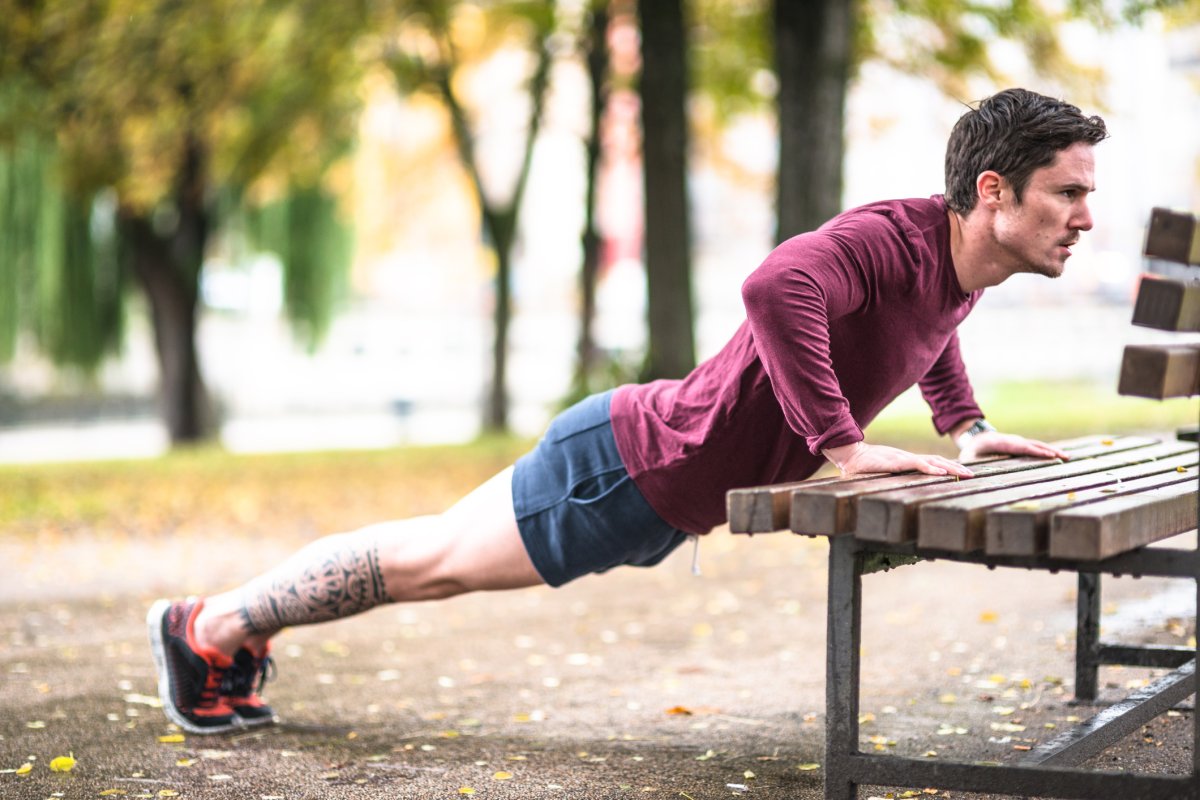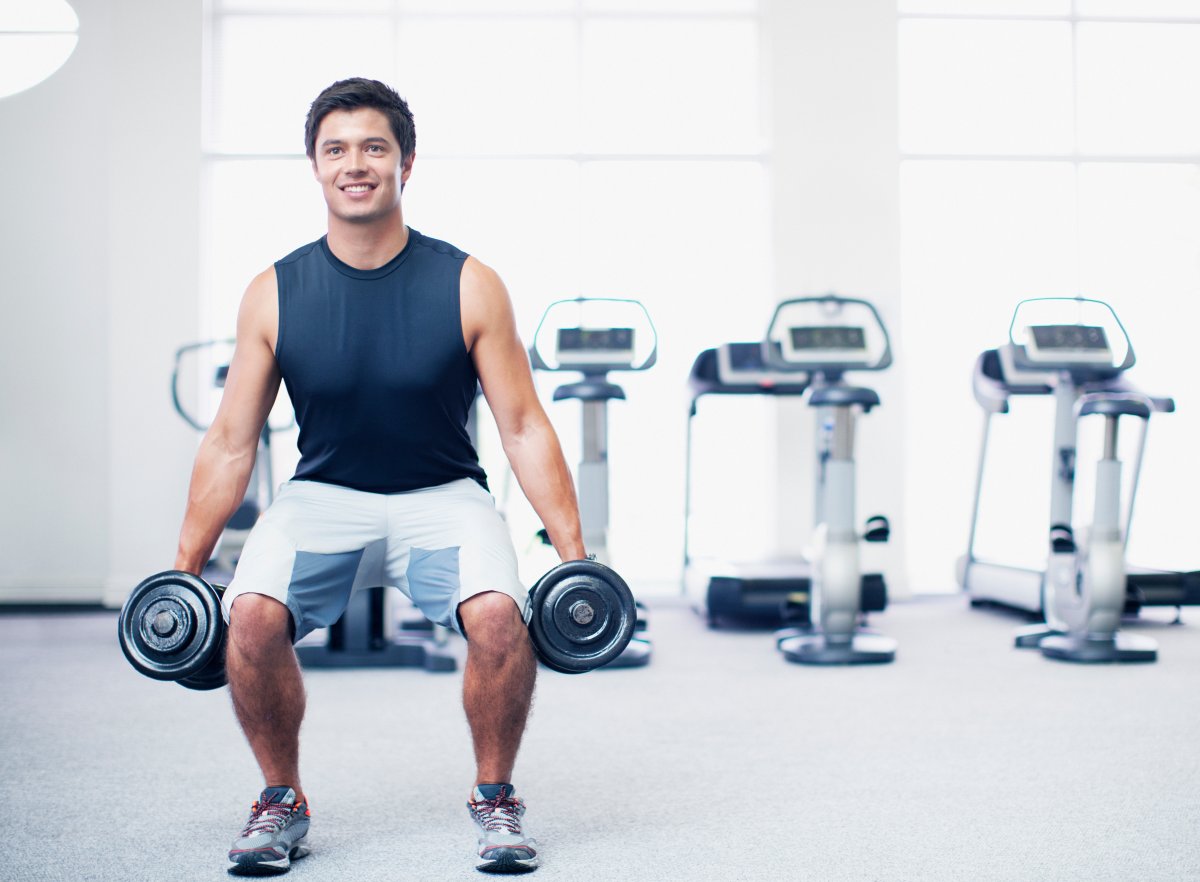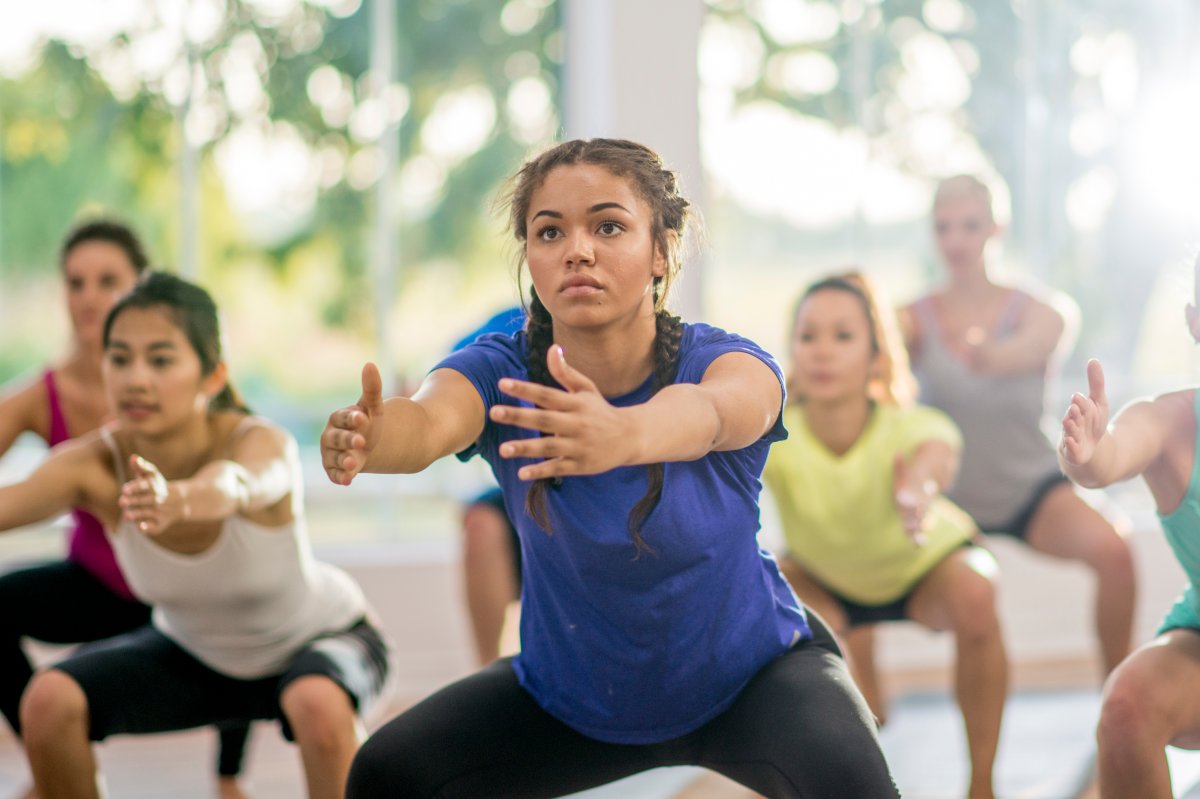Sometimes finding the best exercise routine can be a little daunting.

There are options of styles, classes and professionals available across the country, and while personal training is often the most practical plan, it can get a little pricey.
And exercise trends, like any trends, are also changing. According to Health magazine, some of the biggest fitness trends of 2017 include body weight training, HIIT and group training.
READ MORE: 8 no-equipment exercises you’re probably doing wrong
Below, we asked four Canadian personal trainers to share some of their favourite exercises and how they benefit our bodies overall. And before you try any of these, consult with a trainer on proper form to avoid any injuries.
Bench burpee with a push-up
Leg lift cross crunch
The expert: Kalev Jaaguste of Kalev Fitness Solutions in Vancouver
How to do it: On your back, keep one leg extended straight just off the floor, the other knee bent with hands at temples. Lift the straight leg up (like a leg lift), and bring the opposite elbow across to touch the knee in a crunch motion, keeping your hands at the temple.
Why it works: This exercise works a number of muscles in your core and anterior flexor chain, and it is more dynamic than a regular crunch or leg lift.
Pledge plank
The expert: Amanda Thebe of Fit & Chips of Toronto
How to do it: Start in a straight-arm plank position with the body in a straight line from your ankles to your head. Driving your supporting hand into the floor, take your other hand to the opposite shoulder, like a shoulder tap. Keep hips perfectly still and brace the core, creating a tension throughout the body. To make this a little easier, try placing the feet a little wider and the arms narrower, this will keep you stable.
Why it works: Adding dynamic movement that requires you to create extra stability throughout your core and glutes is the best way to progress a plank. By keep your hips still during the movement, activating all those smaller muscle groups that can atrophy with age.
READ MORE: Ottawa researchers target ‘exercise’ protein to help people with right-side heart failure
Dumbbell squat into bicep curl and shoulder press
Body weight squats

Lunge jumps
The expert: Kalev Jaaguste of Kalev Fitness Solutions in Vancouver
How to do it: Start in the lunge position with one knee almost touching the floor (left leg in front), driving your arms into the air as you extend up launching yourself into the air. While in mid-air, switch leg positions (right leg in front) and then land into the lunge position cushioning your landing.
Why it works: This exercises works out a number of lower body muscle and core, while challenging your balance.
Kettlebell deadlifts
READ MORE: 5 stretches to do after exercise
Compound row
The expert: Matt Mombourquette of One Up Fitness in Halifax
How to do it: This will depend on the equipment you have, however the basic idea is to squeeze your shoulder blades together as you pull the handles towards your chest. Keep your back straight, chest proud and head and neck in a neutral position. Preferably, the handles will be in a slightly pronated position (hands are turned slightly towards the floor), and your elbows stick out to your sides at roughly a 35- to 40-degree angle. You should keep your back straight and motionless during the set to ensure you don’t strain your lumbar muscles. This is not a “rowing exercise” as you see in the cardio section of the gym and therefore should not be performed as such. This is best performed in as slow a manner as possible to ensure safety and increase the challenge. It is also important to breathe freely and consistently. Aim for right to 10 repetitions and build up to training yourself to muscle failure (not being able to complete the final attempted repetition).
Why it works: This exercise machine is available at almost all gyms, so it’s easy to find. The exercise addresses all of the major muscle groups in your back, rear and middle shoulders, biceps, forearms and grip strength.









Comments